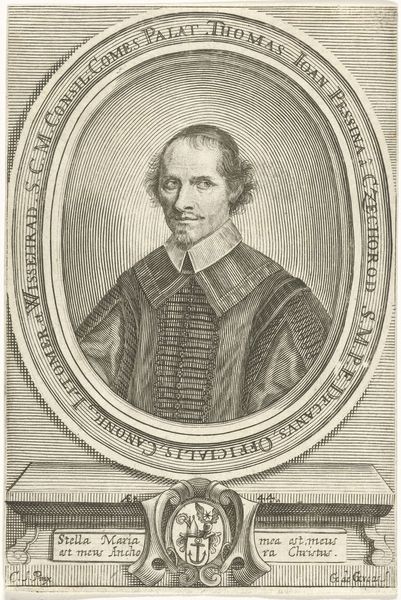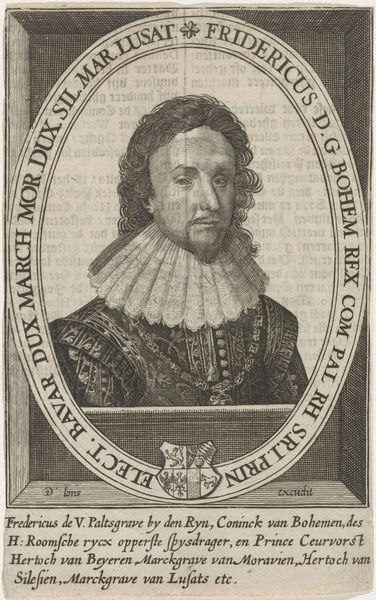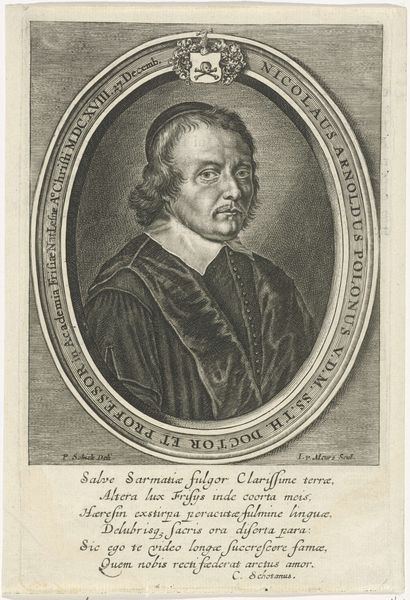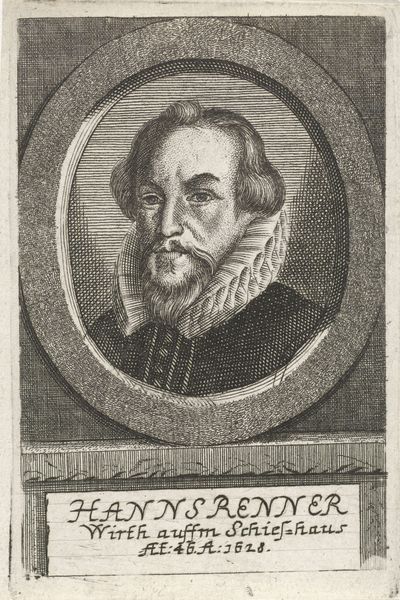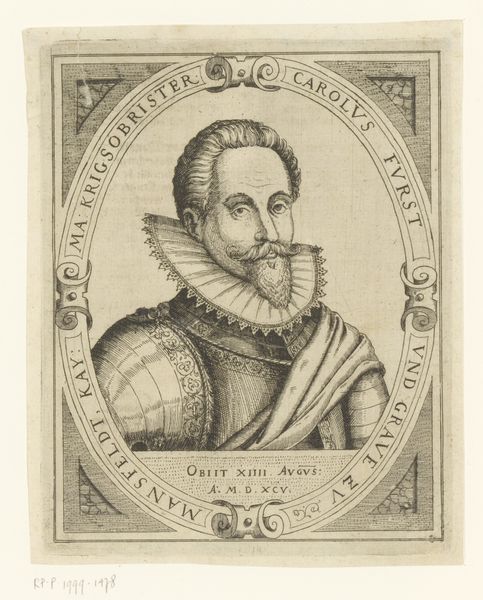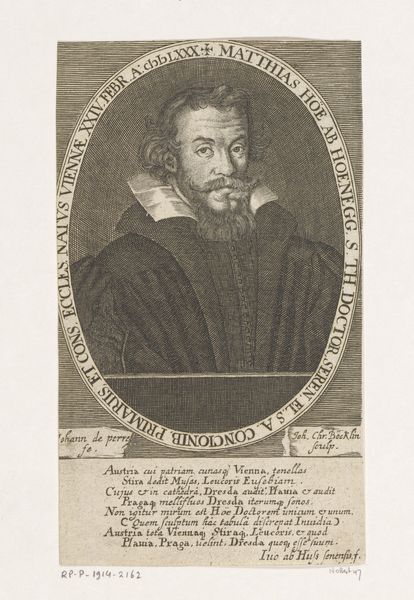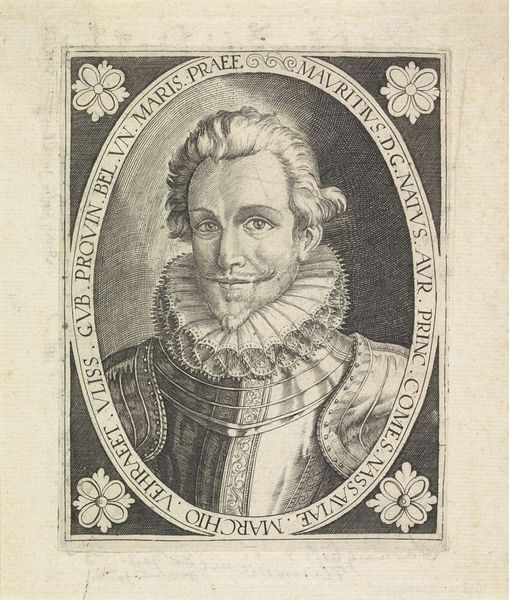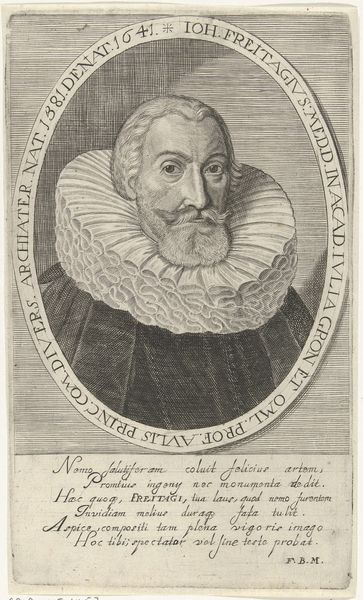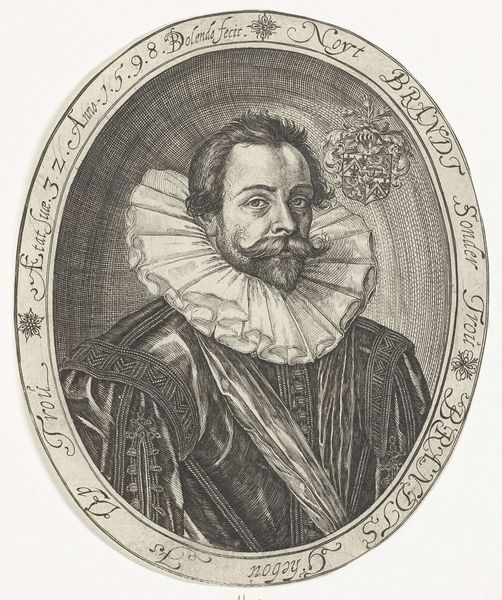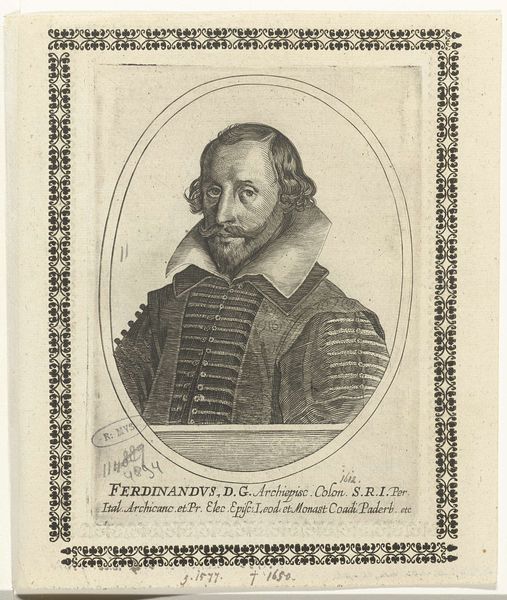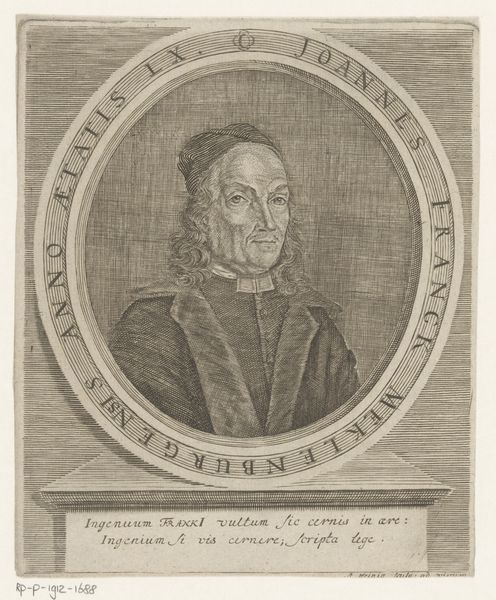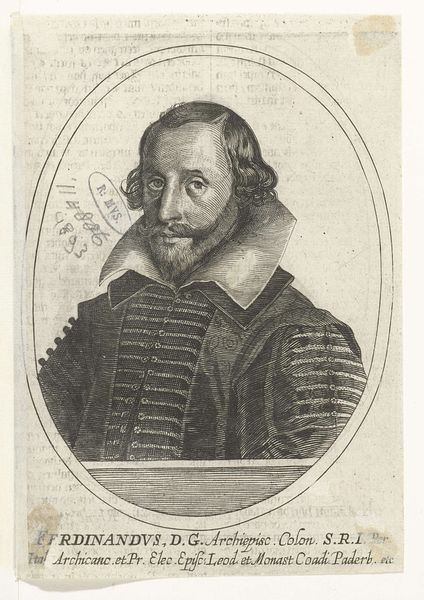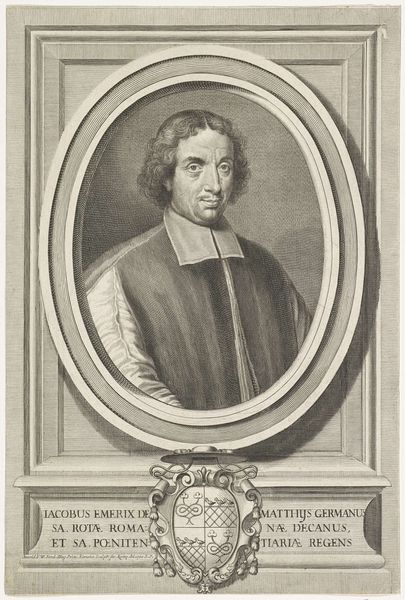
engraving
#
portrait
#
baroque
#
engraving
Dimensions: height 148 mm, width 98 mm
Copyright: Rijks Museum: Open Domain
Editor: Here we have a baroque-style engraving, *Portret van Thomas Joannes Pessina de Czechorod*, by Gerard de Groos, dating from around 1660 to 1730. There's such formality and stillness about the portrait. What can you tell us about the significance of depicting someone like this during that period? Curator: Absolutely. Portraiture, particularly during the Baroque period, served as a powerful tool for constructing and reinforcing social hierarchies and personal identities. In this engraving, we see Thomas Joannes Pessina de Czechorod framed within very specific visual markers. How do you think the framing impacts our interpretation of him as a person, given that religious text and heraldic emblems appear at the top and bottom of the portrait? Editor: I see it reinforces his position, emphasizing his status and lineage within the church as a religious figure of importance. He’s not just an individual, but a representative of an institution. Curator: Exactly. Engravings like this were often commissioned to circulate images of power and authority. They performed a social function by disseminating particular narratives about the individual and the institutions they represent. Think about the religious context and the emphasis on piety during that era. What social performance is being represented? And how is his identity shaped, or even constrained, by these expectations? Editor: So it’s less about capturing his likeness and more about creating an idealized image of a powerful figure to convey a particular message. This work really encourages you to question how much control individuals have over their public image, particularly in the context of institutional power. Curator: Yes, and by considering who commissioned the engraving, and for what purpose, we can reveal a wealth of information regarding the social, political, and religious landscapes of the time. Understanding these layered contexts provides insights that shape our interpretations of this work. Editor: I see now how examining the social functions of the portrait allows a more complete understanding of art history and culture. Thanks.
Comments
No comments
Be the first to comment and join the conversation on the ultimate creative platform.
